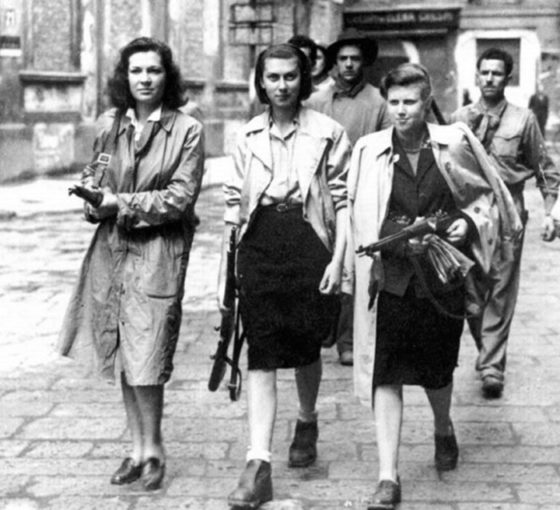
“Few appreciate the sheer volume of non-military breakthroughs that emerged between 1914 and 1918.”
By Doran Cart & Jonathan Casey
HOW MANY INNOVATIONS came directly out of World War One? Tanks, flame throwers and sonar all come to mind.
Then there were the existing technologies that were perfected during the conflict – things like airplanes, submarines, wireless radios and machine guns.
Yet few appreciate the sheer volume of entirely non-military and non-lethal breakthroughs that also emerged between 1914 and 1918 — improvements that changed our daily lives. Consider the following:

Contraception
As many as 400,000 U.S. soldiers contracted venereal diseases during the First World War, which in turn took a toll on available manpower. So not surprisingly, a variety of efforts were undertaken by the army to curtail the spread of sexually transmitted infections. Organizations like the YMCA and the Salvation Army tried to provide “wholesome” entertainment during the soldiers’ free time with varying degrees of success. And when that didn’t work, prophylactics, known as “French Letters,” were available at local civilian pharmacies. The curious name was a reference to the little postage envelopes in which the items were discreetly packaged. And while the U.S. military, unlike the German army, didn’t dispense its own condoms, soldiers were issued cards that listed locations where they could be purchased. By the 1920s, a domestic market for prophylactics was well established stateside.

Kleenex
For much of the war, the filters in army gas masks were lined with ordinary crepe paper. With the outbreak of the Spanish Flu in 1918, the Kimberly Clark company repurposed the flimsy inserts to be used by sick people to sneeze into rather than using unhygienic cloth handkerchiefs. The modern Kleenex was born.

Kotex
Army nurses improvised another ubiquitous consumer product. When the army failed to provide the women traditional sanitary napkins, many used CelluCotton field dressings, which contained wood pulp. The nurses discovered that the bandages were five times more absorbent than traditional napkins. After the war, Kimberly Clarke seized upon the idea for consumer feminine hygiene products.

Pilates
One of the trendiest workout regimes of our own era also got its start in the First World War. A German physical trainer by the name of Joseph Hubertus Pilates came up with the idea while being interned in a British detention facility. He used the exercises to keep his fellow inmates in shape during their four years in captivity. After the war, he wrote extensively about the practice. Decades later, his techniques were revived by fitness buffs.

Plastic Surgery
The practice of nip and tuck also emerged from the conflict. A New Zealand doctor working in London named Harold Gillies spent much of the war surgically reconstructing the faces of casualties wounded on the frontlines. By 1918, he’d performed more than 11,000 procedures on disfigured soldiers. Although precious few of his operations restored his patients to their pre-war appearances, Gillies’ work helped many of the injured return to a normal life in peacetime. His efforts not only secured him a knighthood, but it lay the foundation of modern plastic surgery.

Prosthetic Limbs
While it was the British who excelled in restoring the damaged faces of battlefield casualties, Germany made huge advances in getting war amputees mobile again. The increase in casualties resulted in developing more functional limbs, specifically for arms, so that soldiers could be more accepted and welcomed back into society. While they were not comfortable or made particularly well, the appendages did allow soldiers to participate in society following the war.

Healthy Eating
Not since the Civil War had so many Americans experienced food shortages like they faced in 1917 and 1918. With a massive new army to feed, not to mention allies to supply, the U.S. Food Administration was forced to regulate the production and distribution of grains, meats and produce stateside. And with so much food being shipped overseas, Americans were encouraged to be as nutritionally self-sufficient as possible for the duration of the fighting. Authorities urged patriotic families to grow their own vegetables in backyard gardens – a concept that’s back in vogue among 21st century organic food enthusiasts. Meatless and wheatless days were widely observed – another trend that’s been revived in recent years. If Americans weren’t fighting for the war, they were working for the war, and growing their own food was one way to contribute.
Doran Cart is the senior curator of the National World War I Museum and Memorial. Jonathan Casey is the director of the Archives and Edward Jones Research Center at the National World War I Museum and Memorial.










So very interesting, Doran and Jonathan! Thanks for all you do!